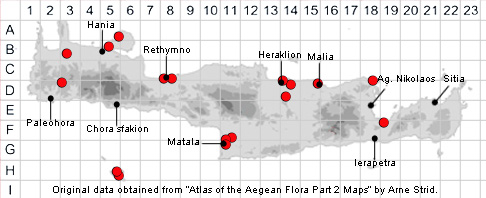SPECIES DESCRIPTION
MELILOTUS SULCATUS
Family and Genus:- See- LEGUMINOSAE
Common Names:- Furrowed melilot
Homotypic Synonyms:- None
Meaning:- Melilotus (Gr) Honey-clover. A name used by the Greek academic
Theophrastus and refers to melilot's attractiveness to honeybees.
Sulcatus (L) Furrowed, grooved, sulcate.
General description:- Erect, branched or simple annual
Stems:-
1) 10-40 cm.
Leaves:-
1) Leaflets, lower, oblong-cuneate, obtuse, serrate. upper, oblong to oblanceolate.
2) Stipules, dentate.
Flowers:-
1) Racemes, 1-1·5 cm, 8- to 25-flowered, elongating in fruit and then as long as or
longer than the leaves.
2) Corolla, 3-4 mm, yellow.
Fruit:-
1) Legume, 3-4 mm, globose, concentric-striate, pale yellow or yellowish-brown
when ripe.
Key features:-
1) Leaflets, of the upper leaves oblong to oblanceolate.
2) Corolla, 3-4 mm
3) Legume, not stipitate, subglobose.
Habitat:- Field margins, olive groves, roadsides, seasonally damp spots in dry open
shrubby vegetation, occasionally in saline coastal habitats. 0-500 m.
Distribution:- Scattered in W, Greece, lacking in the interior. - Mediterranean
region, eastwards to W Syria and Palestine. Fairly rare on Crete known only from a
few scattered coastal locations
Flowering time:- Late Mar to May.
Photos by:- Courtesy of Wiki-Commons
